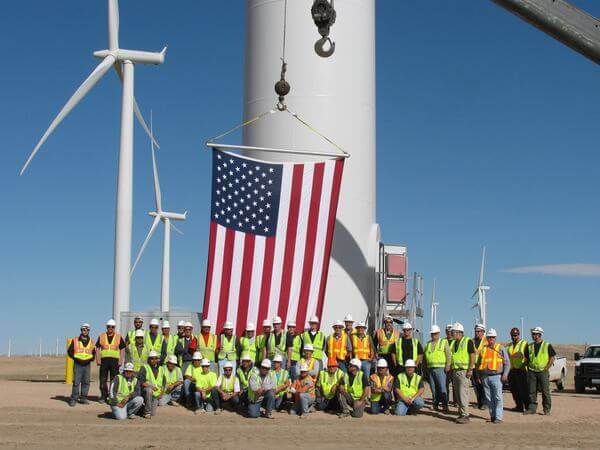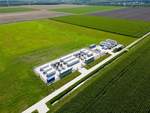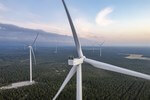News Release from windfair.net
Wind Industry Profile of
U.S. Researchers Consider CO2 Tax
Curtailment is the horror term for the renewable energy sector. If so much solar and wind energy is produced that the grids can no longer absorb the electricity, the plants must be switched off. This can be remedied by innovative technologies such as storage and batteries. In Germany, the topic has been the subject of a massive public debate in recent weeks, not least because the German government has launched a multi-million euros programme to promote storage technologies. The first projects that use hydrogen, for example, in the context of Power-to-X are already underway and are showing initial success.
But even in the U.S., where the share of renewables in power generation is still smaller than in many European countries, the importance of storage is becoming growing. Recently, researchers at the University of Michigan published a study showing how investments in batteries and other energy storage technologies can be economically viable with appropriate political support.
“The cost of energy storage is very important,” says study co-author Maryam Arbabzadeh, a postdoctoral fellow at U-M’s School for Environment and Sustainability. “But there are some incentives we could use to make it attractive economically, one being an emissions tax.” Arbabzadeh led the research in collaboration with colleagues from Ohio State University and North Carolina State University.
Gregory Keoleian, director of U-M’s Center for Sustainable Systems, served as her adviser and one of the co-authors of the study. “Electricity generation accounts for 28% of the greenhouse gas emissions in the United States, and given the urgency of climate change it is critical to accelerate the deployment of renewable sources such as wind and solar,” says Keoleian, a professor of environment and sustainability and civil and environmental engineering. “This research clearly demonstrates how energy storage technologies can play an important role in reducing renewable curtailment and greenhouse gas emissions from fossil fuel power plants.”
In the course of their research, Arbabzadeh and her colleagues developed complex models that analyze a total of nine different energy storage technologies. They also examined what would happen if each American state added up to 20 gigawatts of wind and 40 gigawatts of solar capacity, and how all this would be economically affected by a CO2 tax of up to $200 per ton.
According to the study, adding a total of 60 GW of renewable energy could reduce California's harmful greenhouse gas emissions by 72 percent. If the storage technologies are linked beyond the state's borders, a reduction of 90 percent would even be possible. The state on the west coast still uses many inflexible resources such as nuclear power, geothermal energy, biomass and hydropower, which makes the potential for greenhouse gas reductions much higher than, for example, in Texas, where the savings potential is 57 percent. Texas, currently the leading state for wind energy in the USA, still uses many coal and natural gas-fired power plants.

The pipeline for wind energy projects in the U.S. is bursting, but the power grid can often no longer keep up. (Image: AWEA)
However, even the infrastructure in the U.S. has so far posed a problem, as the power grid is outdated and modernization is progressing slowly - if at all.
“We’re seeing a growing number of wind farms select turbines capable of powering nearly twice as many homes as the average U.S. wind turbine,” says Tom Kiernan of the American Wind Energy Association (AWEA). “Wind technology innovation is keeping pace with demand, but we can’t afford to neglect the power grid infrastructure that delivers electricity from where it’s made to consumers. We continue to urge the Administration, Congress, FERC, and grid operators to ensure well-designed transmission lines can be planned, permitted, and built in a timely fashion.”
In addition, energy suppliers would also have to invest massively in storage technologies. As an incentive, the researchers brought a CO2 tax into play, as is already the case in other countries - or as is currently being discussed in Germany. However, it cannot be assumed that President Donald Trump, who has many prominent voters including coal and natural gas companies, will be able to bring himself to introduce such a tax.
- Author:
- Windfair Staff
- Email:
- press@windfair.net
- Keywords:
- USA, Germany, storage, battery, University of Michigan, research, study, CO2, emission, reducton, wind, solar, tax

























